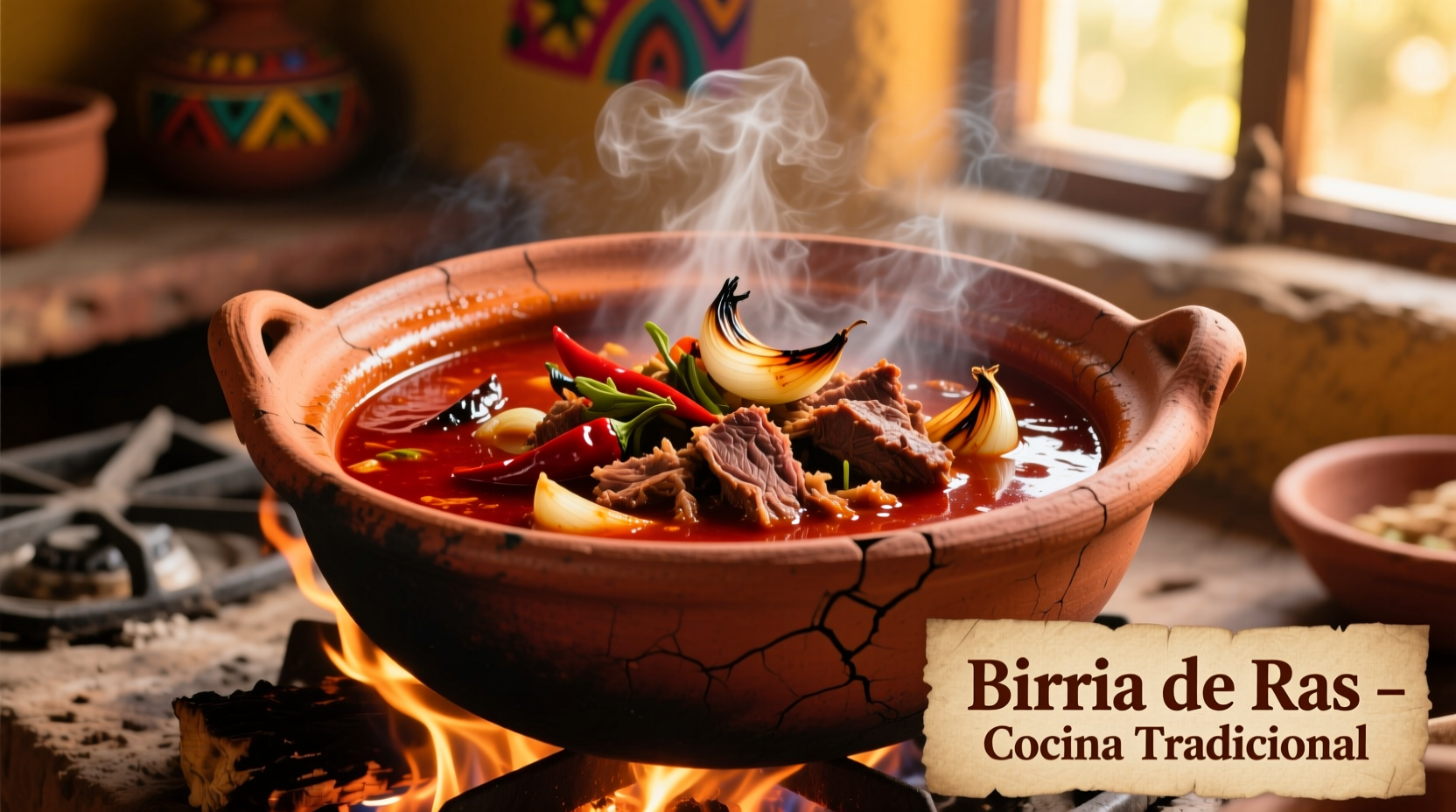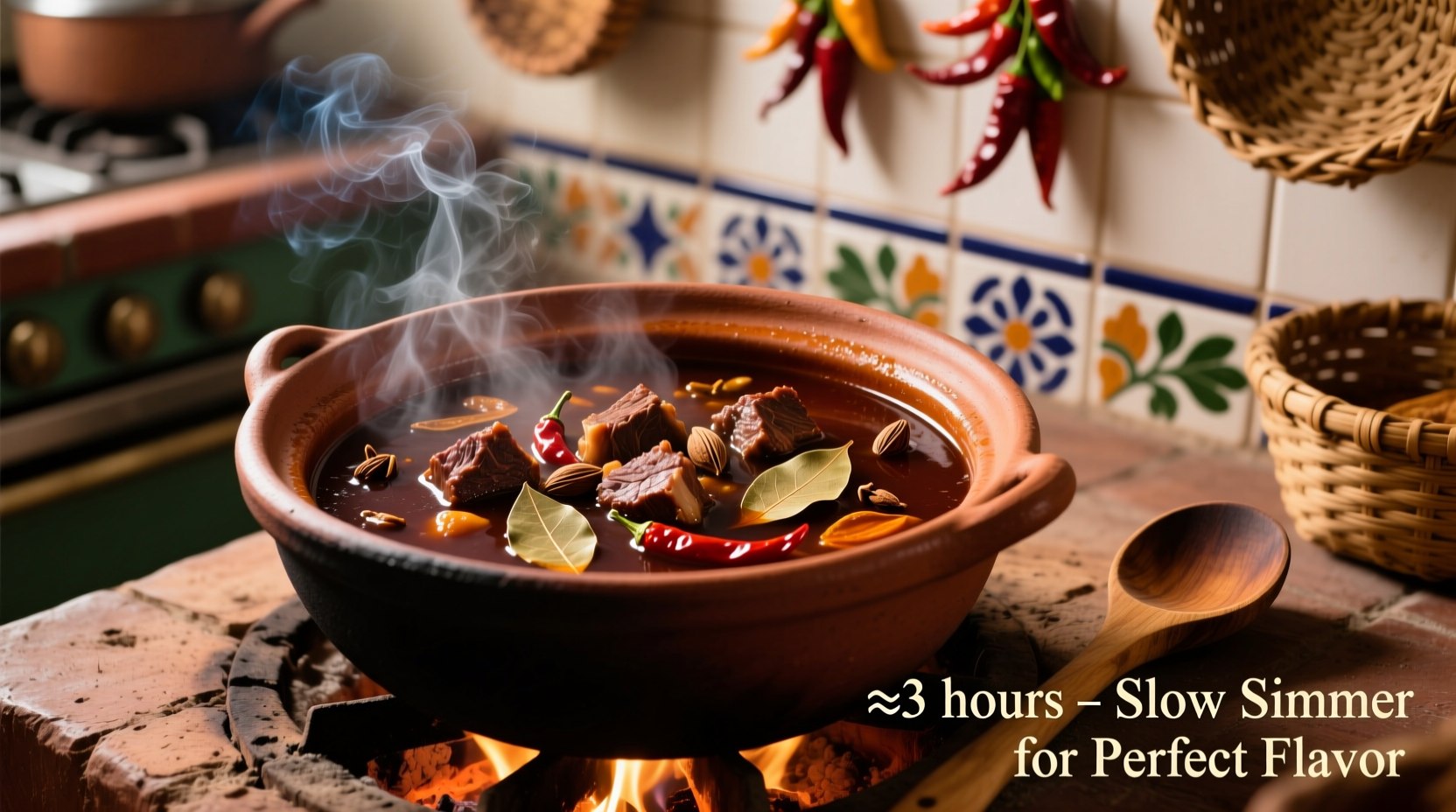Birria typically takes 6 to 12 hours to cook properly, with 3-8 hours of active cooking time depending on your method and cut of meat. Traditional preparation includes 2-12 hours marinating time plus 30-60 minutes resting time after cooking for optimal tenderness and flavor development.
Planning to make authentic birria but wondering how much time you'll need to set aside? You're not alone. Many home cooks underestimate the time commitment required for this beloved Mexican specialty, leading to disappointing results. Birria isn't just another stew—it's a labor of love that transforms tough cuts of meat into melt-in-your-mouth perfection through slow cooking.
After years of perfecting traditional birria recipes across Mexico, I've discovered that understanding the timing breakdown is crucial for success. Whether you're preparing for a special occasion or simply craving this rich, complex dish, knowing exactly how long birria takes to cook will help you plan your kitchen schedule effectively and achieve restaurant-quality results at home.
Why Birria Timing Matters More Than You Think
The magic of birria happens through time—not heat. Rushing the process creates tough, dry meat that misses the dish's signature tenderness. Authentic birria requires patience because it transforms collagen-rich cuts like goat, beef chuck, or short ribs into succulent, flavorful meat through slow, low-temperature cooking.
According to culinary anthropologists studying Mexican food traditions, traditional birria preparation evolved in Jalisco as a way to make the most of tougher, less expensive cuts of meat. This historical context explains why timing is non-negotiable in authentic preparation.
Birria Time Breakdown: What to Expect
Understanding each phase of birria preparation helps manage expectations. Here's what you'll need to allocate:
| Preparation Phase | Time Required | Critical Notes |
|---|---|---|
| Ingredient Prep | 20-40 minutes | Chopping vegetables, toasting spices, preparing chilies |
| Marinating Time | 2-12 hours | Minimum 2 hours; 8-12 hours yields best flavor penetration |
| Cooking Time | 3-8 hours | Depends on cooking method and meat cut (see detailed breakdown below) |
| Resting Time | 30-60 minutes | Essential for meat to reabsorb juices before serving |
Cooking Time by Method: Finding Your Perfect Fit
Not all birria cooking methods require equal time. Your equipment and schedule determine the best approach:
Traditional Stovetop Method
The most authentic approach requires 4-6 hours of gentle simmering. This method allows for careful monitoring and adjustment but demands attention. Start with high heat to bring the liquid to a simmer, then reduce to the lowest possible setting where you see occasional bubbles breaking the surface.
Slow Cooker Convenience
For hands-off cooking, the slow cooker takes 6-8 hours on LOW setting. This method produces consistently tender results but lacks the opportunity to adjust flavors during cooking. Add all ingredients to the slow cooker, set it, and forget it until the final 30 minutes when you should check seasoning.
Pressure Cooker Time-Saver
Modern appliances can reduce cooking time significantly. An Instant Pot or pressure cooker prepares birria in just 60-90 minutes total (including natural release time). While this method works well for busy schedules, traditionalists argue it misses some depth of flavor developed through slow cooking.
Oven-Braised Technique
For even heat distribution, oven braising takes 4-5 hours at 300°F (150°C). Place your Dutch oven with ingredients in the center of the oven, covered tightly. This method provides excellent results with minimal monitoring.

Factors That Impact Your Birria Cooking Time
Several variables affect how long birria takes to cook properly:
- Meat cut selection: Goat shoulder requires 6-8 hours while beef chuck needs 4-6 hours
- Batch size: Larger quantities increase cooking time by 1-2 hours
- Altitude: At higher elevations, cooking times increase by 25-50%
- Temperature consistency: Fluctuating heat extends cooking time significantly
According to research from the National Institute of Anthropology and History in Mexico, traditional birria preparation in Jalisco communities typically involves 8-12 hours total process time, with cooking comprising 60-70% of that duration. This historical practice developed to maximize flavor from tougher cuts of meat through slow transformation of collagen into gelatin.
Signs Your Birria Is Perfectly Cooked
Don't rely solely on timing—use these visual and textural cues to determine doneness:
- Meat pulls apart easily with two forks (fork-tender)
- Internal temperature reaches 195-205°F (90-96°C) for optimal tenderness
- Sauce has reduced by about one-third and coats the back of a spoon
- Collagen has fully converted, creating a rich, unctuous texture
Undercooked birria remains tough and chewy, while overcooked meat becomes dry despite the liquid environment. The sweet spot occurs when connective tissues have fully broken down but before muscle fibers begin to dry out.
Planning Tips for Busy Schedules
You don't need an entire day to enjoy authentic birria. Try these time management strategies:
- Marinate overnight while you sleep (8-12 hours)
- Start cooking early in the morning for dinner service
- Use a programmable slow cooker to finish just before serving
- Prepare the consommé (broth) separately one day, then add meat the next
- Cook a large batch and freeze portions for quick reheating
Professional chefs at Mexico City's renowned El Cardenal restaurant often prepare birria in two stages—cooking the meat to near completion, then finishing it just before service to maintain optimal texture. This technique works well for home cooks with limited time on serving day.
Avoid These Common Timing Mistakes
Even experienced cooks make these timing errors that compromise birria quality:
- Rushing the marinating process (minimum 2 hours, but 8+ is ideal)
- Boiling instead of simmering (creates tough meat)
- Serving immediately instead of allowing proper resting time
- Checking the pot too frequently (adds 15-20 minutes per opening)
- Using high heat to reduce cooking time (results in uneven texture)
Remember that birria often tastes even better the next day after flavors have fully melded. Many traditional Mexican families actually prepare birria one day and serve it the following day for special occasions.
Conclusion: Patience Pays Off in Flavor
While birria requires significant time investment, understanding the timing breakdown transforms this potentially daunting task into a manageable kitchen project. Whether you choose traditional stovetop preparation or modern pressure cooking, respecting the essential time elements ensures authentic, restaurant-quality results.
The 6-12 hour total timeframe might seem lengthy at first glance, but most of this time involves passive cooking where you can attend to other tasks. With proper planning and understanding of each phase's purpose, you'll consistently create birria that honors its rich Mexican heritage while fitting your modern lifestyle.











 浙公网安备
33010002000092号
浙公网安备
33010002000092号 浙B2-20120091-4
浙B2-20120091-4